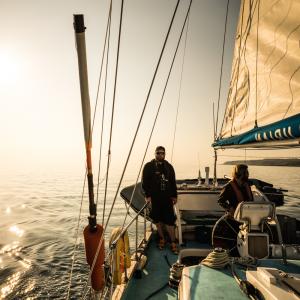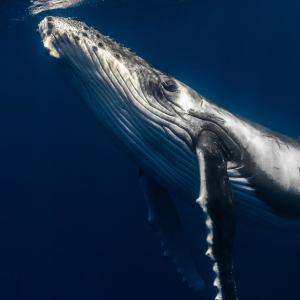
Ocean biodiversity and overfishing
The biggest threat to ocean biodiversity is overfishing. As well as the impacts of fishing on target fish species, fishing vessels often – either unintentionally or on purpose and illegally – catch species they are not interested in or are prohibited from taking and selling. This is called ‘bycatch’.
It is estimated that every year fisheries bycatch kills: 720,000 seabirds, 300,000 whales and dolphins, 345,000 seals and sea lions, over 250,000 turtles, and more than 1.1 million tonnes of sharks and rays. Many of these species are endangered or on the brink of extinction.
A healthy ocean is essential to all life on our blue planet so getting fisheries management right is vital for the health and survival of marine ecosystems and species as well as for the 660 million people worldwide who are directly or indirectly dependent upon fisheries for their livelihoods.

Getting to the heart of the problem
The conservation of our most vulnerable marine mammal, shark and turtle populations is only possible if we first understand the true nature of the problem and then deploy effective ways to prevent and reduce bycatch.
Currently, there is no accurate measurement of bycatch and the scale of the surrounding problems, as there is very little independent monitoring of most fishing activities at sea.
This needs to change, which is why WWF and Sky Ocean Rescue are calling for the adoption of Remote Electronic Monitoring with cameras (REM) to improve monitoring of catches and accountability across fisheries, including reducing wildlife bycatch.
REM can also help respond to the needs of an increasingly concerned and environmentally aware public and businesses who want to know that their seafood is coming from a sustainable source.

Supporting sustainable fishing, ending wildlife bycatch
Effective management of bycatch, including that of Endangered, Threatened and Protected (ETP) bycatch, requires first identifying and quantifying the problem through monitoring fisheries.
New UK fisheries legislation includes an objective to minimise, and if possible, end, the bycatch of sensitive species such as dolphins, seals and seabirds in UK fisheries. It also requires that all catches are recorded and counted.
WWF have called for full monitoring with REM to be adopted across fishing fleets so that it is possible to understand more about both what target fish species are being caught and what species are accidentally caught in fishing gear. This move will help improve the sustainability of fishing and help bring an end to wildlife bycatch.
Currently, monitoring of bycatch at sea is often a choice between using human observers or REM with cameras or a blend of both. This report outlines the significant advantages of REM over traditional human observer programmes which include cost savings, improved data, addressing observer bias and improving accuracy of self-reporting and compliance. Additional benefits include staff welfare and enabling monitoring on smaller vessels with limited space.
WWF and Sky Ocean Rescue are calling on the UK to demonstrate global leadership by adopting full monitoring with cameras across vessels fishing in UK waters, including those fisheries known to be at high risk of wildlife bycatch.


 Why UK seas and coasts are important
Why UK seas and coasts are important
 10 species you might not know live around our UK seas
10 species you might not know live around our UK seas
 Here are our top 10 facts about whales
Here are our top 10 facts about whales